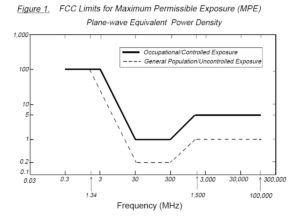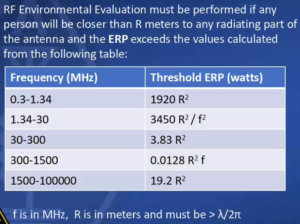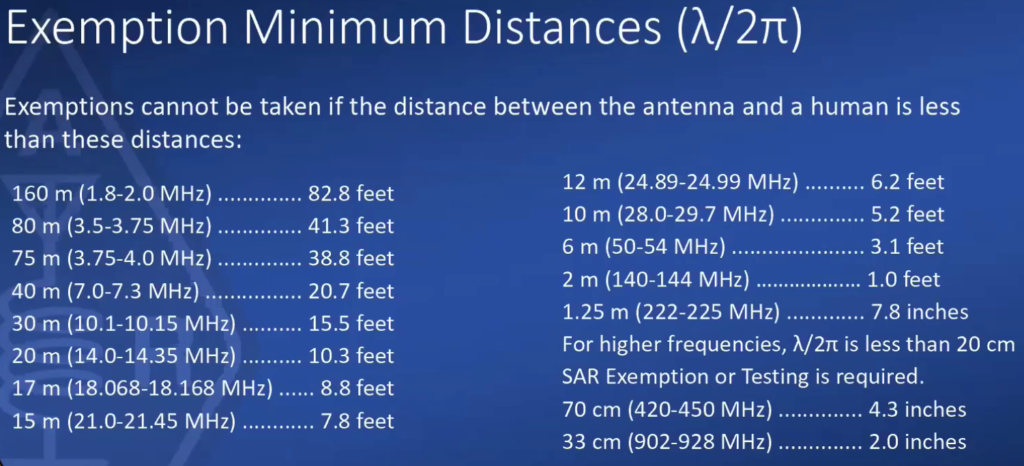One of the responsibilities of the Technical Coordinator in the Ohio Section is to submit something for the Section Journal. The Section Journal covers Amateur Radio related things happening in and around the ARRL Ohio Section. It is published by the Section Manager Tom – WB8LCD and articles are submitted by cabinet members.
Once my article is published in the Journal, I will also make it available on my site with a link to the published edition.
You can receive the Journal and other Ohio Section news by joining the mailing list Tom has setup. You do not need to be a member of the ARRL, Ohio Section, or even a ham to join the mailing list. Please sign up!
If you are an ARRL member and reside in the Ohio Section, update your mailing preferences to receive Ohio Section news in your inbox. Those residing outside the section will need to use the mailing list link above.
Updating your ARRL profile will deliver news from the section where you reside (if the leadership chooses to use this method).
Go to www.arrl.org and logon.
Click Edit your Profile.
You will be taken to the Edit Your Profile page. On the first tab Edit Info, verify your Email address is correct.
Click the Edit Email Subscriptions tab.
Check the News and information from your Division Director and Section Manager box.
Click Save.
Now without further ado…
Read the full edition at:
THE TECHNICAL COORDINATOR
Jeff Kopcak – TC
k8jtk@arrl.net
The new FCC exposure requirements. Maybe you’ve heard about them. Maybe not. Maybe wondering how they apply to your station. The FCC Report and Order does not change RF Exposure (RFE) limits but does require all services, including amateur radio, to evaluate limits or take the exemption. There’s probably a lot I don’t understand. With respect to those much smarter than myself, I’ll try my best to explain this but I’m probably going to get some stuff wrong. In addition to covering reasons for these changes and what they mean to most hams, I’ll walk through an exception calculation. Those are easiest and likely the only calculation a ham might need to perform in most cases.
In 2019, the FCC adopted new rules to limit human exposure to radio frequency energy. These rules went into effect on May 3rd, 2021. Not much changed in these new rules except that Amateur Radio is no longer categorically excluded from performing these evaluations to demonstrate compliance. Previously, only when a station exceeded certain power limits was an evaluation required. For the most part, operating barefoot on HF (without an amplifier, typically 100 watts or less) or operating most dual band radios with 50 watts or less, all were categorically exempt. The second exclusion, no mobile stations had to perform these evaluations. Both exclusions are now removed, gone. Exclusions are replaced with the exemption.
Removing the amateur radio exclusions means hams are now required to perform evaluations in all cases. But! You do not submit anything to the FCC. Do the evaluation, print out/save results or put notes on paper – they are to be kept with each station’s records. These records would be used in a situation where a complaint is filed with the FCC against your station. Such as: neighbor doesn’t care for your tower/antenna. Writes the FCC saying their family is subject to harmful radiation. The FCC takes those complains fairly seriously and will come knocking for an inspection (which they can – and will do. See 97.103, (a) and (c) specifically). The representative may ask for this evaluation. They will implicitly trust the results if they appear to be correct and the station is otherwise compliant. This is the self-regulation abilities we are allotted by the FCC. The FCC will inform the neighbor, based on evaluation of the station, it was found to be compliant and they have nothing to worry about. Another scenario maybe a building permit is sought in order to erect a tower. The entity that grants the permit might ask to have an evaluation completed.
In any case, each amateur station certifies, on their 605 form, they will comply with Radiofrequency Radiation Safety. Licensed hams are considered trained in safety by way of passing the license exam. Completing an RF safety evaluation does not exempt any station from being otherwise compliant and responsible. If a station is transmitting, someone comes up and touches the antenna, the station operating the equipment is still responsible.
If you were one that completed an evaluation under the old rules, that evaluation is still valid until 2023. You have 2 years to complete an evaluation under the new rules. Every station (not grandfathered under the old rules) must complete an evaluation after May 3, 2021 – including new stations or when any significant changes are made to an existing. Changes would include an increase in power, better antenna, better coax, moving the antenna closer to areas occupied by humans. HTs manufactured before May 3, 2021 are grandfathered – no evaluation needed ever. HTs manufactured after May 3, a SAR (Specific Absorption Rate) evaluation is performed by the manufacturer.
The exemption calculation is a formula which indicates if the antenna is compliant or more evaluation is needed. Exemptions require less calculations than a full exposure analysis. Exemptions cannot be taken with in the reactive nearfield. Distance to a person is important. Any transmitter within 20 cm (7.87 inches) of the body is considered in the nearfield and requires a SAR evaluation. Nearfield also varies with frequency.
The HT falls into this weird area because they are almost always used within 7.87 inches of the body. At this time, the methods for completing an evaluation are not clear for a few reasons: 1) above 300 MHz is not really measurable, which only affects 2-meter handhelds. 2) SAR evaluations are very costly and require specially calibrated equipment. 3) absorption inside the body is very hard to measure. Cell phone manufactures have to complete SAR evaluations for every handset and antenna configuration. To add insult-to-injury, a SAR would have to be completed in each position of the radio. That is to say holding the radio straight up, slight angle, talking across the microphone, holding the radio with the right hand, left hand, and so on. Cha-ching! Not so fast. Radio manufactures will be responsible for performing this SAR evaluation. In the evaluation, they will likely use the stock rubber duck antenna provided with the radio. If you change the antenna (as most of us do) with a 3rd party or aftermarket, that means all evaluations need to be performed using the new configuration. This is an area the ARRL is still working out with the FCC for clarification. Right now, your HT is OK. Will manufacturers pass on the cost to the consumer? Unknown for sure but very likely.

Don’t forget these evaluations need to be performed at field day sites, repeater sites, and beacon locations. Field day sites may need restrictions placed on frequency or power allowed to meet the requirements. Adjustments to antennas maybe needed, adding time to the field day setup.
In places where SAR is performed, an MPE (Maximum Permissible Exposure) chart displays the amount of energy which should not be exceeded at different frequencies. There are two different categories: occupational/controlled exposure (hams and their families) at 6-minute average and general population/uncontrolled (everyone else, such as neighbors) with a 30-minute average. MPE is lowest between 30 MHz and 300 MHz because those frequencies are easily absorbed by the human body.
Say we have a station with a multiband antenna (20-10 meters) with 0 dbd of gain (manufacturer specs). There is a sidewalk 15 feet (5 meters) away (closest human exposure to radiation) from the antenna. The transmitter outputs 100 watts into 50 feet of RG-58. The highest frequency in operation is 29.70 MHz. 50 feet of RG-58 at 29.7 MHz is rated at 1db of loss (mfr specs), which is 22% (find a gain/loss table or calculator for this percentage).
First, are people within the distances (antenna to human) in the table below for near field exposure?
Nearest person would be 15 feet away and lowest band we plan to operate is the 20-meter band since the antenna is capable. No, humans are not within the reactive nearfield (10.3 feet). We can continue with the exemption calculation. If humans are within the nearfield, a full evaluation needs to be completed.
Next, calculate the maximum ERP. For a multiband antenna, ERP decreases at higher frequencies so you only need to calculate at the highest frequency the station plans to use. 10 meters in this case.
 3450 R2/f2 = Maximum ERP (formula for the range 1.34-30 MHz)
3450 R2/f2 = Maximum ERP (formula for the range 1.34-30 MHz)
3450 x (5 meters)2 / (29.7 MHz)2 = 97.8 watts maximum ERP
Calculate the station’s ERP:
(Transmitter power – Feedline loss) x Antenna gain = ERP
(100W – 22W) x 1.0 = 78 Watts ERP
To compare, 78 watts is less than 97.8 watts. This antenna qualifies for an exception!
What happens if the station cannot take the exception? If you never transmit 29.7 MHz and only plan to use lower frequencies, calculate at the lower frequency. Move the antenna further away from the sidewalk. Or perform a full evaluation. The exemption numbers are verrry conservative numbers and conservatively safe. If actual exposure is calculated on the sidewalk, it will be less than the exception calculation. Averaging time is not taken into account. If the station talks for 15 minutes and listens for another 15 minutes, the exposure is halved. Areas like a sidewalk, people are likely to be there for only a few seconds at a time.
Online calculators are a huge help in performing power density estimations. VP9KF’s calculator performs MPE calculations. The Lake Washington Ham Club site calculates MPE by taking into account transmitter duty cycle. It will provide minimum safe distance to the antenna.
To perform a full analysis, the FCC aid for evaluating human exposure is OET Bulletin 65 and OET Bulletin 65 supplement B. The no-longer-in-print book by Ed Hare – W1RFI is available for download as a PDF. Modeling software is available for free or little cost. One such modeling application is EZNEC. The ARRL is working on finding or developing tools for all hams to use. Those can be found at: http://www.arrl.org/rf-exposure and the ARRL Technical Information Service is a member benefit that can provide more information. Finally, Greg – N9GL, Chairman of the ARRL RF Safety committee, gave a very informative presentation on these changes. It runs 2 hours with Q&A. Ria – N2RJ, director of the ARRL Hudson Division, has a YouTube channel with a video on this topic. The majority of the information in this article came from both videos, thanks to both Greg and Ria.
FCC Radio Frequency Exposure Rules from Dan Marler on Vimeo.
Recent FCC NPRM’s have put ham radio use of the 5GHz band at risk. These frequencies are utilized for things like mesh networking. Who wants to take away these allocations? Commercial interests to push the 5G mobile standard. These same interests have already taken part of the 3 GHz WiFi band. ARDEN Mesh is fighting back, legally, against repurposing these allocations. If you have 5 GHz AREDN mesh nodes in the lower 45 – 5.850-5.895 GHz or upper 30 – 5.895-5.925 GHz channels, please take the time to read and respond to their solicitation for information.
Another huge thank you to the West Chester Amateur Radio Association – WC8VOA, which I’m also a member, for having me as the presenter at their May 6th meeting. West Chester is a suburb of Cincinnati and I’m in a suburb of Cleveland so this meeting was all virtual. The presentation was on ham radio VoIP modes (Voice over IP) and my system that links these modes together. There was great questions and discussion around VoIP. This is the club that operates out of the Voice of America Museum and holds tours during Hamvention. You can find their Monday night net on my system at 8pm.
That’s about it for this month. Thanks for reading and 73… de Jeff – K8JTK

